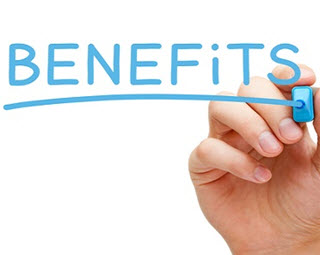There are essentially two types of Centrelink loans available and multiple options within these two…
Top Financial Benefits for Low-Income Families
 Many low-income households in Australia qualify for a variety of financial benefits designed to help them make ends meet. Some of these programs are ongoing, providing long-term support as long as you are entitled, while others can give you short-term relief during periods of financial hardship. Which options are available to you depends on your specific situation, such as income level and family size. Here’s an overview to help you explore the various benefits available to low-income households today.
Many low-income households in Australia qualify for a variety of financial benefits designed to help them make ends meet. Some of these programs are ongoing, providing long-term support as long as you are entitled, while others can give you short-term relief during periods of financial hardship. Which options are available to you depends on your specific situation, such as income level and family size. Here’s an overview to help you explore the various benefits available to low-income households today.
Centrelink
The largest source of financial support for low-income families is the Centrelink program. These services are provided by the Australia government and can help alleviate some of the financial strain associated with issues like unemployment and raising children. The eligibility requirement for each program varies, but they can be considered a valuable monetary benefit in times of need.
For example, unemployed job seekers may qualify for help through the Newstart Allowance. This can provide upwards of $535 every two weeks to help make various living expenses more manageable.
Other family-oriented financial benefits include, but are not limited to, the Family Tax Benefit, Parenting Payment, Rent Assistance, Telephone Allowance, Child Care Benefit or Rebate, Youth Allowance, Carer Payment, Low-Income Family Supplement, and the Single Income Family Supplement. Contacting Centrelink is easy, simply visit the Department of Human Services website or call, here is a list of departments within Centrelink.
Each of these programs is designed to help provide financial support to Australian families in need. They can provide funding to manage a range of expenses such as those related to food, housing, your child’s education, medical expenses, and utilities.
State Assistance
In some cases, low-income families may also qualify for financial benefits through their state. These are separate from Centrelink benefits and will have varying eligibility requirements.
For example, Victoria offers financial help to homeowners facing a variety of struggles including mortgage relief, concessions, renovation loans, and more. Assistance for private renters, educational costs, and other forms of support are also available.
To determine what options exist in your area, you’ll need to contact your local state office. Every location may have different programs, so what is available in one state isn’t guaranteed to be available in another.
Visit our homepage and utilise the interactive map to learn about different state and territory based assistance programs.
Charities and Non-Profits
A bigger source of support for low-income families is often local charities and non-profits. These organizations aim to relieve stresses that many households face including food insecurity, issues paying bills, housing troubles, and medical crises. Every organization is unique and typically targets specific parts of the population.
Charities and non-profits may be able to provide needed funds without the need for the money to be repaid. They might also be able to connect low-income families with a variety of financial products designed to help.
To see what is available, you’ll need to contact organizations local to you or those that operate nationally. They’ll be able to outline the kind of support you may be eligible to have based on your unique circumstances. That way, you’ll know exactly what you can receive.
If they can’t offer assistance directly, they may be able to refer you to other local programs that can provide financial assistance as well. Often, these groups are well connected, so they may have information about organizations of which you weren’t previously aware.



Comments (0)